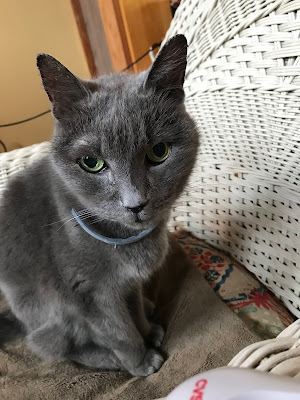The land here on Martha's Vineyard island has been farmed and groomed and cultivated for hundreds of years, first by the indigenous Wampanoags, then by European seafarers and settlers and their accompanying laborers of color -- African, Cape Verdian, Latinx. Today the permanent population knows well that the beauty of the land and surrounding ocean provides their livelihoods. Tourists come to play here. Some land is cultivated, but much has reverted to semi-wild meadows and forests. More than
one third of the island, about 20,000 acres, is conserved in some way.
Because of the dense mix of intensive long-time use with preservation of the wild, the woodland trails where I wander frequently come with curious markers and interesting signage.
I suspect there's a good story behind that marker, but I have no idea what happened.
This plaque commemorating the extinct heath hen is a good quarter of a mile from any road. That wasn't far enough to preserve these birds from New England settlers who hunted this species of prairie chicken to extinction.
Because I have good maps, I know this points to what is known as an "ancient way," the Dr. Fisher Road, one of a maze of narrow paths that cut through otherwise roadless tracts. Access to them is legally protected, though landowners sometimes throw up private barriers.
I guess the fence works. I saw neither dogs nor other wandering livestock.
These signs are at most trail entrances this time of year. It's bow hunting season at present, a time when one can still run in the woods, with bright clothing. After Thanksgiving the shotgun hunters get their short season and I'll stay away for a bit. The island is home to entirely too many deer which serve as a vector for the ticks that carry Lyme disease. This hunting season is not enough to much reduce the overpopulation.
Whenever I am on the island, I like to pass by the plaque commemorating
Rebecca, Woman of Africa, abducted from Guinea who was slave to one Colonel Bassett -- her great grandson became the island's only African American whaling ship captain.
I'm not alone in visiting Rebecca. This year someone is caring for this magical object at the site.


















































